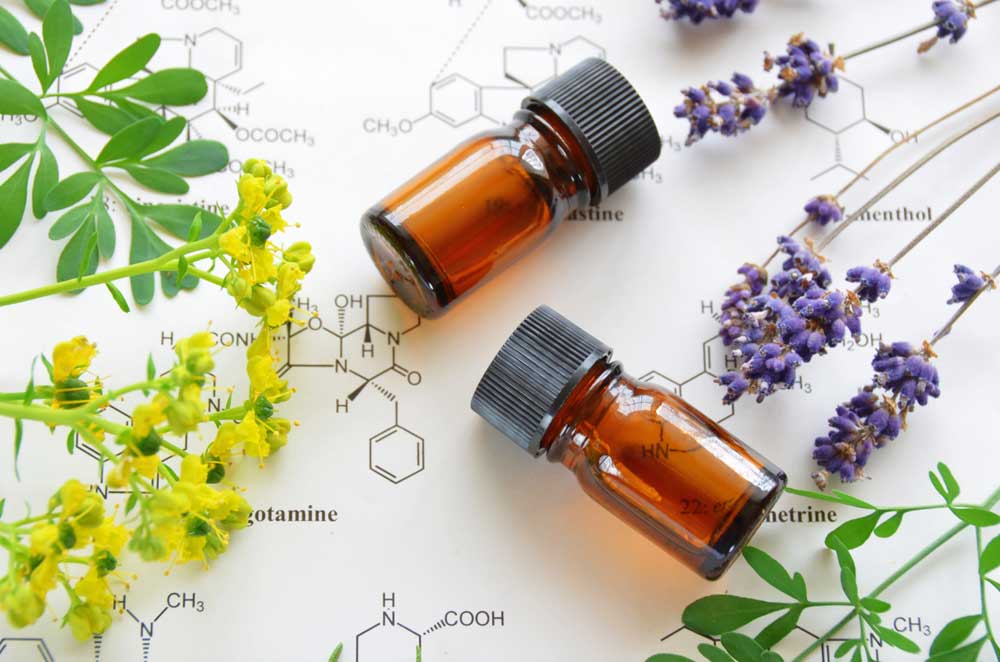 Plants are living creatures, and as such need to be able to discourage pests and predators, attract helpers and heal after an injury. The chemicals used in these, and other, processes are what we know as essential oils. There are a huge number of chemical compounds in plants that can also be found in essential oils, and more are discovered every day as new plant species are evaluated for their medicinal applications. Future research is expected to uncover even more about how plants can be used to affect humans.
Plants are living creatures, and as such need to be able to discourage pests and predators, attract helpers and heal after an injury. The chemicals used in these, and other, processes are what we know as essential oils. There are a huge number of chemical compounds in plants that can also be found in essential oils, and more are discovered every day as new plant species are evaluated for their medicinal applications. Future research is expected to uncover even more about how plants can be used to affect humans.
Essential oils are unique because they contain a large mixture of volatile chemical components which can be used by humans for wellness purposes. Researchers study how this chemical variety interacts with the human body to determine which plants affect different body systems. These chemical components are delicately balanced within a plant, meaning that one individual component of that plant, as seen in the mass production of modern medicine, is not as medically effective as all the chemical pieces combined. Use of the whole plant, rather than just a single chemical, has been shown to be much more effective. Because essential oils comes from plants, they also have adaptability. Every generation of new plants results in small nuisances in their chemical make up to provide the plant with a better chance of survival. Modern medicine has shown that static chemicals produced in a laboratory eventually lose their effectiveness as microbes and our own bodies change and adapt. Current essential oil research focuses on how a plant’s adaptability can be more beneficial for our wellness.
Along with the research being done on the individual components of essential oils, scientists are also looking to see how the different methods of essential oil use affect the human body. Traditionally, essential oils have been used primarily aromatically and topically. The skin, which is the body’s largest organ, absorbs anything applied to it in less than a minute, and the nasal cavity and lungs provide a quick pathway to the brain and blood. The process of absorption and effects of oils used these two ways are more well known than the third usage, internally. How oils work in the body when taken internally is the topic of much current research. Certain oils are equally effective when used in any of the three ways, and can provide a variety of benefits when used in each way. If you plan on taking essential oils internally, check to make sure that you can before you do. Some oil company’s products are not grown in a pure enough way to be consumed, and some plants are poisonous when taken in high quantities internally. As essential oil usage continues to rise, expect to see an increase in scientific research studies that build on what we currently know about these amazingly unique, ever changing plant products.
Sources:
Hill, D. K. Uses and Bioavailability of Essential Oils. Living Magazine, Fall 2013; 10-11.
Stevens, N. What makes essential oils unique? Living Magazine, Spring 2015; 30-31.
Do you have questions or comments about this blog? Would you like to find out more about purchasing essential oils for yourself? Visit my doTERRA page or complete the form on the right side of this page and I’d be happy to help you! You can also subscribe to our blog on the right side of the page.
*These claims have not be evaluated by the FDA. These products are not intended to diagnose, treat, cure or prevent any disease. If you have serious health concerns, consult a doctor- and bring your oils with you! You never know which doctors will be willing to help you take a more natural approach to health care!



